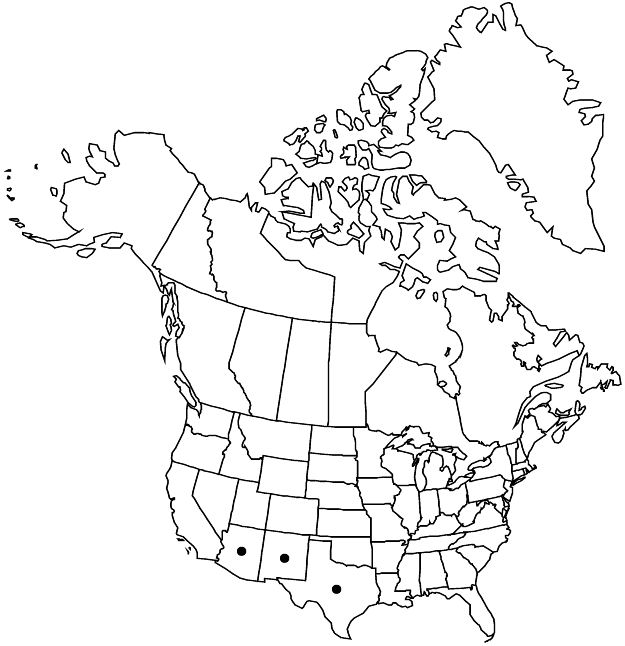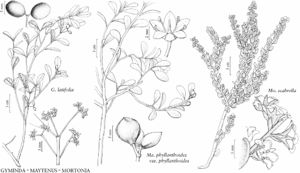Difference between revisions of "Mortonia scabrella"
Smithsonian Contr. Knowl. 5(6): 28. 1853.
Selected by author to be illustrated
FNA>Volume Importer |
FNA>Volume Importer |
||
| Line 51: | Line 51: | ||
|publication year=1853 | |publication year=1853 | ||
|special status=Selected by author to be illustrated | |special status=Selected by author to be illustrated | ||
| − | |source xml=https://jpend@bitbucket.org/aafc-mbb/fna-data-curation.git/src/ | + | |source xml=https://jpend@bitbucket.org/aafc-mbb/fna-data-curation.git/src/f6b125a955440c0872999024f038d74684f65921/coarse_grained_fna_xml/V12/V12_59.xml |
|genus=Mortonia | |genus=Mortonia | ||
|species=Mortonia scabrella | |species=Mortonia scabrella | ||
Revision as of 18:19, 24 September 2019
Shrubs to 2.5 m. Leaves: blade broadly elliptic to suborbiculate, 5–6 × 4–5 mm, length 1.2–1.3 times width, rigid, base round, margins not thickened, revolute, apex round to broadly acute, surfaces scabridulous. Inflorescences cymose panicles. Flowers: sepals rounded-deltate, 1 mm; petals obovate-oblong, 2–2.5 mm. Fruits 3.5–4.5 mm.
Phenology: Flowering spring and fall; fruiting summer–fall.
Habitat: Rocky slopes, hillsides, dry plains, ridges, ledges, rimrock.
Elevation: 300–1700 m.
Distribution

Ariz., N.Mex., Tex., Mexico (Chihuahua, Coahuila).
Discussion
In the flora area, Mortonia scabrella occurs from trans-Pecos Texas to southeastern Arizona.
Selected References
None.
Lower Taxa
None.
